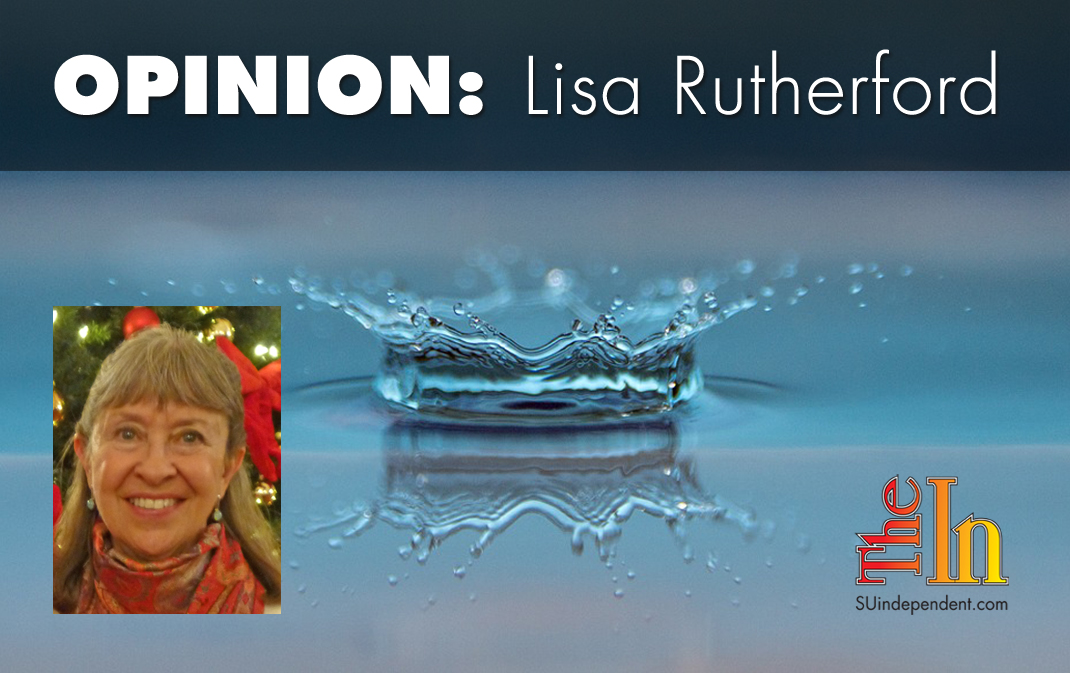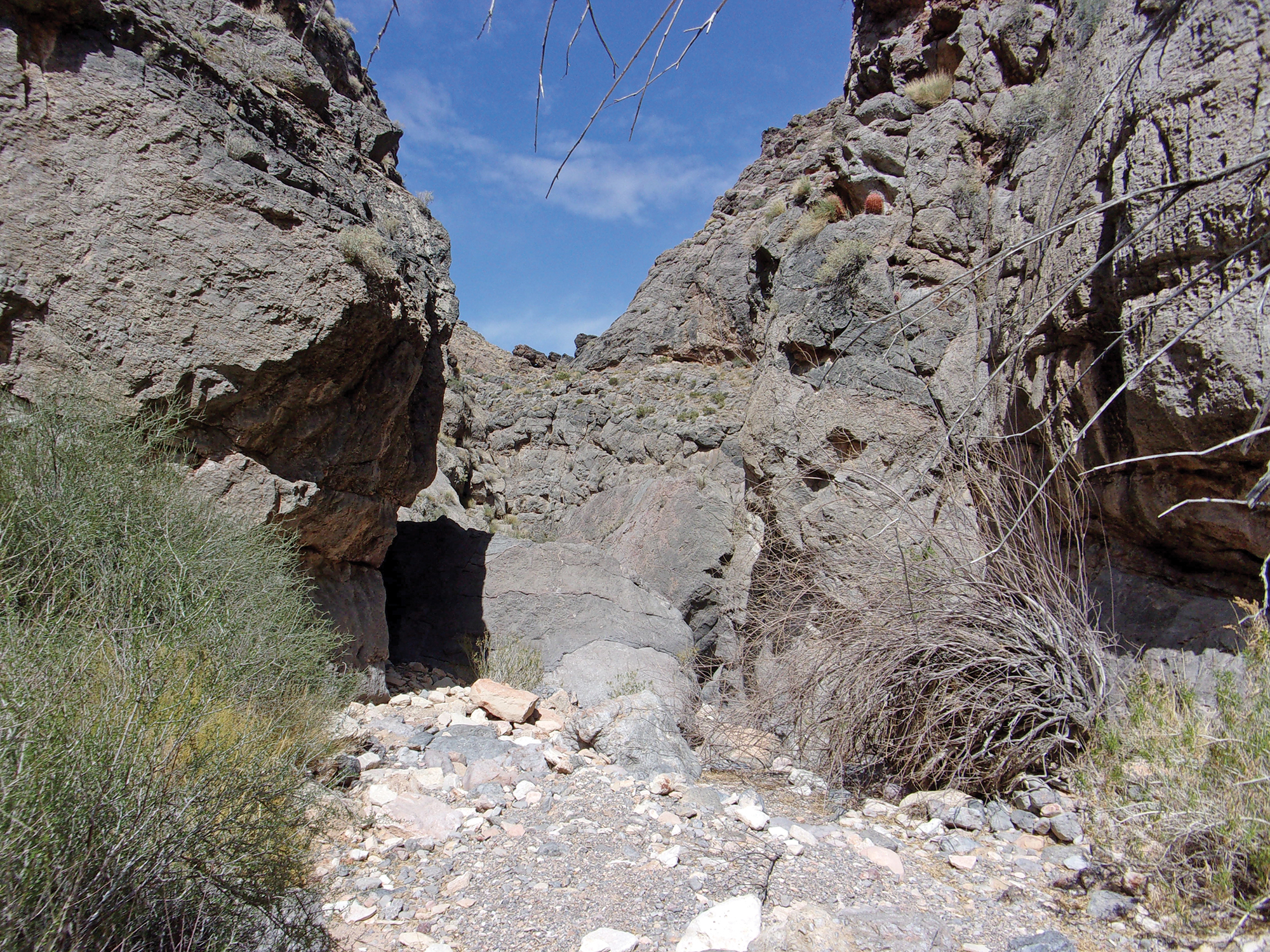
Does Utah actually have a remaining Colorado River water right?
Having recently participated in an event dealing with the proposed Lake Powell Pipeline during which I and two other participants were interviewed on the topic, I’ve been considering the matter of Utah’s remaining right to Colorado River water. After all, that’s what Utah is hanging its hat on. Utah asserts that it still has a remaining right of about 360,000 acre-feet per year, meaning that the 86,249 acre-feet per year used for the Lake Powell Pipeline would be available.
According to the original Colorado River Compact, the Upper Basin states — of which Utah is a member — must deliver on average 7.5 million acre-feet per year for a total of 75 million acre-feet per year every 10 years to the Lower Basin states. This, along with the 7.5 million acre-feet per year that would remain for the Upper Basin, comes to 15 million acre-feet per year. But current flows range between 12 and 13 million acre-feet per year. Surely this means that there is not enough water to meet all the promised deliveries.
Upper Basin states (Colorado, Utah, Wyoming, and New Mexico) get a percentage of what’s left in the Upper Basin after the required deliveries to the Lower Basin are made. Lower Basin states get a fixed amount; for example, California gets 4.4 million acre-feet per year. In 1988, the Department of Interior, in recognition that the Colorado River water supply was decreasing even then, reduced the Upper Basin share from 7.5 to 6 million acre-feet per year, leaving Utah’s 23-percent share at 1.36 million acre-feet per year. However, now with flows around 12 million acre-feet per year, it leaves the Upper Basin with less water to divide. The 86,249 needed for the Lake Powell Pipeline appears to look very questionable. I say “appears to look” because the Colorado River basin states and Department of Interior are always meeting to deal with water issues, so who knows what the future will hold.
The Department of Interior Bureau of Reclamation’s 2012 Colorado River Supply and Demand Study provides some facts that help put the river’s water situation in perspective. The study reveals that the mean natural flow at Lee Ferry, the point at which the Colorado River’s Upper Basin and Lower Basin are divided, is projected to decrease by about 9 percent over the next 50 years while demand for consumptive uses is projected to range from 18.1 million acre-feet per year to about 20.4 million acre-feet per year by 2060, depending on how growth materializes in the basin states. So the long-term projected imbalance in future supply and demand is not a very cheery scenario for areas that are growing exponentially. With our area being one of the fastest growing in the nation, if not the fastest, what will this mean? Reservoir storage has helped in the past, but with reduced reservoir storage and climate change predictions, will that help in the future?
In addition to the predicted increased human demand and reduced flows, depending on Utah’s remaining share is also risky due to over-allocation of Colorado River water rights, junior priority of the Lake Powell Pipeline’s water right, and unsettled Federal Reserve Water Rights claims. It has been 11 years since the last Colorado River Hydrological Determination, which was completed to assess the water yield that water projects can rely on in the Colorado River basin. A new one should be completed before the Lake Powell Pipeline is approved. 2000–18 has been the driest 19-year period on record. Depressed snowpack and warming conditions resulted in only 42 percent of the long-term average runoff yield for Lake Powell this year. We have been in one of the worst drought cycles in over1,200 years. Prior to this drought period, reservoirs were at high levels, which has helped us through this challenging time. No more, however. Lakes Powell and Mead are not in a position to withstand extended drought without some major efforts to manage the water that serves 40 million people — with more coming.
In a 2007 effort to balance Lake Powell and Lake Mead, which had suffered depletions due to the ongoing drought, the Bureau of Reclamation adopted the Colorado River Interim Guidelines for Lower Basin Shortages and the Coordinated Operations of Lake Powell and Lake Mead. The Interim Guidelines explain that water in Lake Powell must be sent to Lake Mead to prevent shortage. The releases from Lake Powell continue to exceed inflows into Lake Powell, reducing storage.
So what’s being done to help the situation?
The Upper Colorado River Commission is empowered to help manage Upper Basin states’ issues including, according to their 2014 resolution, “making findings as to the necessity for and the extent of the curtailment of use required, if any.” However, apparently the real leverage lies with the states to make their own internal decisions on these matters.
So here we are, four years later and 19 years into the drought, and no real decisions have been made as to how to deal with these critical water issues.
The Upper Colorado River Commission’s 2014 resolution Regarding Development of an Emergency Upper Basin Drought Contingency Plan references employing best efforts to help “weather modification programs” to help with drought conditions, the first in modern history but not the last according to predictions. But four years later, we see little improvement — even with their “weather modification” efforts, which include cloud seeding to encourage precipitation! Humans seem to have more influence at undermining the climate through fossil-fuel use than the commission has at modifying weather through cloud seeding.
Apparently, the Bureau of Reclamation will not take a stand about water rights or the Lake Powell Pipeline either. Their take is that it is up to states to decide water rights and projects such as the Lake Powell Pipeline while the federal government acts to facilitate — not dictate — informed decision making in the basin.
Is the Lake Powell Pipeline water right secure? The right to water for the proposed Lake Powell Pipeline is complex. Originally, the water was part of Utah’s Central Utah Project — specifically, the Ultimate Phase of the Central Utah Project. When it was determined that the Ultimate Phase would not be built, the state scrambled to come up with a new plan for the water’s use. Hence, the idea of the proposed Lake Powell Pipeline was born. Apparently, the need to use the water before the right expires is driving the Lake Powell Pipeline process rather than any real need for water in southern Utah.
Applicants are given a timeframe for developing a water right; water not put to beneficial use within that time reverts back to Utah’s Board of Water Resources or the Bureau of Reclamation, depending on the right. In December 2017, the state held meetings with the Bureau of Reclamation to negotiate a long-term contract for water to supply the Lake Powell Pipeline. To date, I have not heard of that contract being finalized. In December, the state and Bureau of Reclamation were squabbling over the cost of the water (only $19 an acre-foot annually is what the Bureau of Reclamation wanted) with the state, of course, wanting the cheapest water possible to help make the Lake Powell Pipeline financing look better — financing that needs all the help it can get!
The truly troubling thing about the Lake Powell Pipeline water right is that it is “junior” to an earlier right that would have supplied water to the Bonneville Unit of the Central Utah Project and also junior to all other water rights with earlier dates.
According to a 2011 letter from the state engineer, the state agreed, in order to protect the Central Utah Project, to subordinate the Lake Powell Pipeline water right to the Bureau of Reclamation’s rights for the Central Utah Project by making the right junior in priority to the Bonneville Unit of the Central Utah Project. Yes, it’s all very complex!
When the water right was planned for the Central Utah Project Ultimate Phase, claims were made that are eerily reminiscent of what we’re hearing today about the dire need for the water in southern Utah. Back then, in 1965, water was planned for an area where population and related industrial developments were expanding rapidly. The area included Salt Lake and Utah Counties, and according to the Bureau of Reclamation’s 1965 Central Utah Project Ultimate Phase Inventory of Available Data, “it is anticipated that the municipal and industrial water demand will far exceed the local supplies available.” The paper goes on to say more:
“Water is the limiting factor in the future progress of the Central Utah area. The area’s continued natural resource development and economic and population growth are assured with the water the project would make available. Without such expanded water supplies a rigid ceiling would be imposed on Central Utah‘s future growth. In the Bonneville Basin where the water requirement is the greatest, undeveloped water supplies are the shortest.”
Amazingly, we have been hearing this same song here in Washington County. And yet the area for which the Central Utah Project Ultimate Phase water was planned has continued to grow robustly without this water so far. Since that area has “senior” right to the water, should it ever need it, will it someday call in that obligation?
A comment from Utah’s State Engineer Kent Jones helps to explain. Remember, he’s talking about water rights, not necessarily real water, and his comment doesn’t address reduced Colorado River flows: “The Colorado River, for example, holds 1.4 million acre-feet of water for Utah to put to use. There are applications approved for more than 2 million acre-feet, and about one half of that is currently in use.”
Jones said the imbalance has yet to be a problem because the water has not been developed — but the struggle will come with time, and those holding “junior” rights will go wanting.
The Lake Powell Pipeline water right from the Ultimate Phase of the Central Utah Project may no longer be present in system, even if Utah has a “paper” water right. But will the “wet” water actually be there to flow through the pipe?
A few facts from a presentation by the Upper Colorado River Commission help highlight Lake Powell’s current situation:
—Six of the last 17 years of inflows into Lake Powell were less than 5 million acre-feet.
—Above-average inflows into Lake Powell have occurred only 4 years since 2000.
—Lake Powell’s average unregulated inflow 1981–2010 was 10.83 million acre-feet.
—Three of the four lowest years on record have occurred during the 17-year drought with 2012 and 2013 being the driest consecutive two-year period in recorded history.
Utah’s dependence on its remaining Colorado River share carries many risks, bad political decisions not being the least of those. The water may not be present in the river system due to diminishing flows from rising temperatures, over allocation, junior priority of the Lake Powell Pipeline’s water right, unsettled Federal Reserve Water Rights claims, and continued pressure from population growth in the west. This year’s Lake Powell inflow forecast is 2.80 million acre-feet, or 39 percent of average. This would be the fifth lowest April–July inflow on record for Lake Powell dating back to 1964, when it was created. Several billion dollars of our tax dollars are resting on our leaders’ decision regarding this project’s funding — money that could be used for other real needs. While leaders focus citizen attention on the Virgin River as our only source of water in Washington County (forgetting to mention our hearty Navajo aquifer), the Virgin River is currently below 25 percent of average,— not 39 percent, as is the case with Lake Powell.
Climate change predictions indicate that our area will require changes in how we deal with water. 2014 research by Ault et al. indicates that the risk of future multidecade megadroughts is more substantial than previously realized. Our Pine Valley Mountains will receive less snow pack. Heavy torrential rains followed by long dry periods will be the new norm. New ideas are needed to deal with this situation. How do we capture that water rather than rely on a risky source 140 miles away? All citizens should be asking themselves, given the information I’ve provided, whether they consider Utah’s remaining Colorado River water right to be secure and worth spending several billion tax dollars on. The right may actually be an even bigger risk than the ballooning cost. Politicians can always figure out ways to get more money out of our pockets, but they are not so successful with Mother Nature.
Articles related to “Does Utah actually have a remaining Colorado River right?”
The viewpoints expressed above are those of the author and do not necessarily reflect those of The Independent.
How to submit an article, guest opinion piece, or letter to the editor to The Independent
Do you have something to say? Want your voice to be heard by thousands of readers? Send The Independent your letter to the editor or guest opinion piece. All submissions will be considered for publication by our editorial staff. If your letter or editorial is accepted, it will run on suindependent.com, and we’ll promote it through all of our social media channels. We may even decide to include it in our monthly print edition. Just follow our simple submission guidelines and make your voice heard:
—Submissions should be between 300 and 1,500 words.
—Submissions must be sent to editor@infowest.com as a .doc, .docx, .txt, or .rtf file.
—The subject line of the email containing your submission should read “Letter to the editor.”
—Attach your name to both the email and the document file (we don’t run anonymous letters).
—If you have a photo or image you’d like us to use and it’s in .jpg format, at least 1200 X 754 pixels large, and your intellectual property (you own the copyright), feel free to attach it as well, though we reserve the right to choose a different image.
—If you are on Twitter and would like a shout-out when your piece or letter is published, include that in your correspondence and we’ll give you a mention at the time of publication.




The issue isn’t “rights”. The issue is water supply. No one knows the future. I believe that populaton(demand) will grow until it outsrips the total supply. The strategy now is let’s use all we’ve got until there is more demand than supply. No one talks about reserve, in case of a non-rainy day. If Powell is a deadpool having rights to the water will not fill our glasses.
The current argument is a joke. This is merely postponing the inevitable. If Southest population growth continues unchecked and there is no “permanent” water supply capable of keeping up with compounding population, the issues we’re facing now will never go away. We’re steaming toward the iceberg while we talk about how we should arrange the deck chairs.
It isn’t a problem of how to make supply meet demand. The problem is how to make demand meet supply. Everytime I raise this issue I’m told people aren’t going to stop having babies or stop moving to the wonderful Southwest, so we’ll just have to produce more water. Which will result in greater population which will result in increased demand for water. How does that solve the problem?
Walt, your points are good ones. It is a matter, however, of “rights” because that’s what’s driving the state’s desire to get what they feel is theirs in spite of the fact that water in the Colorado River is predicted to continue diminishing. To your point, even if they are able to build the pipeline and have water running through it, there will come a point where demand will outstrip that supply also. Leaders are unwilling to face that reality now and are more willing to dump that on their kids while at the same time using their kids as their rationale for why they must have the water now. People who are moving to the southwest and west in hordes should be giving careful consideration to the water situation, but in our society where people expect technology to fix everything for them to make life easier, I’m sure most feel technology will be the fix for this problem, too. Will it be? I don’t know, but at this point I would not bet the farm on it.
Lisa, thank you for your response. You certainly know more about this issue than I. You say “there will come a point where demand will outstrip that supply also.” To me it’s obvious that that point has come and gone.
Demand already outstrips supply. Otherwise we wouldn’t be having this discussion The squabbling over the St. George straw is like hounds squabbling over table scraps with no thought of whether any more scraps will be falling off the table. They won’t be. The table is bare.
I would like to remain in touch with you if you find it acceptable. What is the best way to do so? Thank you.
Walt, you can contact me through my Southern Utah Issues FB page at https://www.facebook.com/SouthernUtahIssuesbyRutherford/. Look forward to communicating with you.
Lisa: Thanks for keeping up with this, and stirring the pot. I agree that “water rights” is an important issue as well as the Colorado River Compact. The Compact is an interstate agreemement moderated by the federal government. Within Utah, under state law, in order to use the State’s water, one applies for a “right”. If, within a certain period, the water has not been “put to beneficial use”, the application lapses. Once you have drilled your well or built a diversion dam, the State Engineer will inspect your efforts, confirm that you are diverting actual wet water not previously appropriated, and rule your right “perfected”, similar to patenting a mining claim or a homestead. It is a complex legal system that requires a lot of paperwork, but is designed to ensure that the State’s water is accounted for and being used wisely. The Flaming Gorge water right, on which the LPP diversion is based, is a little more complicated because of negotiations between the State and the USBR about its origin, status and time period extensions. But I assume that under existing rules it should be considered an “application” because the water is still in the river. The right won’t be perfected until the diversion is completed. As you explain, the Flaming Gorge right derives from uncompleted portions of the original Central Utah Project, and dates from the 1980’s, back when we believed there was more water in the Colorado River than is our current understanding. To cancel an application or restrict a right just because there is no longer enough water, the State Engineer must follow due process, usually basin-wide adjudication, a time consuming, messy, and costly process even in small groundwater basins. It would be a nightmare in the Colorado River basin. It would probably be cheaper to build the pipeline, turn on the pumps, and see if any water comes out.
Really interesting comment, Ben. And given your background, I’m sure it’s accurate. Wouldn’t it just be cheaper all around to let the application lapse and see what happens with the river’s flows in the future? Seems like that would save Utah’s tax payers a lot of money rather than having the state and our district out there tilting at windmills. Their fear that our water is just going downstream for the benefit of others is driving this project while every winter we let water go downstream when it’s not being used during the irrigation season. Seems the district should get control of its own behavior before using that excuse to burden our state and her citizens.